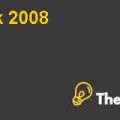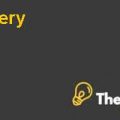
Introduction
In this case, there are two companies in different industries. One company is Home Depot, an American retailer of home improvement and construction product and services. Home Depot operates in the big box type of stores across all the states in the United States.
The second company is Toyota Motors. Toyota Motors is a Japanese automotive manufacturer. Toyota is the largest multinational corporation that produces and sells cars worldwide.
The financial analysis consists of ratios analysis from the year 2011 to 2015. Company ratios are analyzed under valuation ratio, profitability ratio and financial strength ratios.
Financial Analysis
Home Depot
Home Depot’s revenues in absolute dollar terms are increasing; it has increased from $67,997 Million to $83,167 million in 2015. In growth terms, revenue has been increased 22% in five years.
Operating profit margin of Home Depot is increasing year on year basis in 2011 operating profit margin was 8.59%, which increased to 9.46% in 2012, 10.39% in 2013, 11.63% in year 2014 and 12.59% in the current year 2015. The increase in operating profit is due to increase in price of goods and commodities. Tight control on cost of goods sold and operating expenses further increased operating profit margin.
Profitability Ratios
Operating Profit Margin
Home Depot’s industry average operating profit margin is 5.85% while home depot 2015 operating profit margin is 12.59%, which is higher than the industry average and which is considered as positive.
Like Operating profit margin, net profit margin is also increasing on yearly basis partially due to continuous increase in operating profit margin and controlled non-operating expenses. Net profit margin year 2011 was 4.91%, which increased to 5.52% in 2012, 6.07% in 2013, 6.83% in the year 2014 and 7.63% in the current year 2015
Net Profit Margin
Home Depot’s industry average net profit margin is 3.80% while home depot’s 2015 net profit margin is 7.63%, which is higher than industry average and which is considered as positive and contributing factors.
Return on Equity
Industry average return on equity is 13.56% while five average returns on equity are 35.19%, which is above industry average and depict that Home Depot was able to generate enough profits than its industry peer. Home Depot’s return on equity in the year 2015 is 68%, which is highest from last four years.
Financial Strength Ratios
Current Ratio
Home Depot’s current ratio average is 1.40 while the industry average is 1.70 which means that Home Depot has not maintained enough liquidity. The current ratio of Home Depot is not stable and it fluctuates on yearly basis. The current ratio is calculated by dividing current asset to current liabilities. An increase in current liabilities or decrease in current assets will result in a decrease in the overall ratio.
Book Debt to Equity Ratio
Book debt to equity ratio depicts that how much company has debt as compared to its equity, higher ratio means more debt as compared to equity. Home Depot’s book debt to equity ratio is increasing at a fast pace. Debt to equity ratio has been increased from 58.84% in the year 2011 to 207.63% in the year 2015 which means that Home Depot’s debt is increasing more quickly that its equity. While Home Depot’s industry average debt to equity ratio is 62.15% that is less than currently Home Depot maintain.
Higher debt ratio means higher financial leverage which is risky and has negative financial consequences. Negative consequences include notching of credit rating and higher cost of capital.
Market Debt Equity Ratio
Market debt to equity ratio is the more powerful as compared to financial gearing of the company. The market value of debt includes the market value of the bond that company often issued to raise debt capital.
Home Depot’s market debt to equity ratio increased up to 181% in the year 2015 while industry average ratio stands at 46.5%. This means that Home Depot is highly Leverage Company and risky as well. The market value of debt is not easily available which is one of the major weakness.Corporate Finance Assignment Case Solution
Interest Coverage Ratio
Higher debt means higher interest expense, which means lower interest coverage ratio if there is no increase in revenue and profits. Home Depot’s average five yearly interest coverage ratio is 12% while the industry average is 21.50%, which can be interpreted due to high debt interest coverage ratio that is less than industry averages.............................
This is just a sample partial case solution. Please place the order on the website to order your own originally done case solution.











